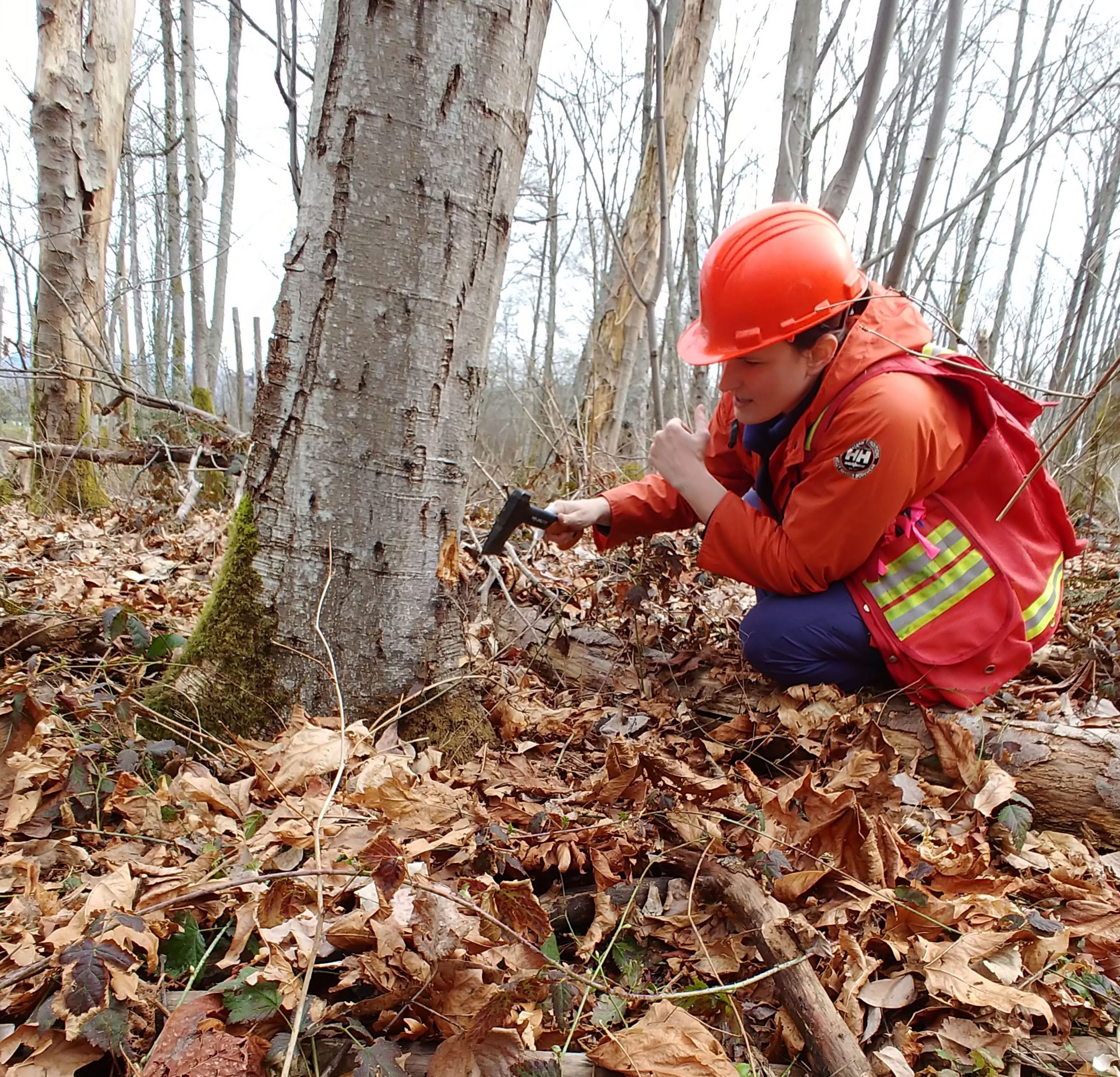Opportunistic Symbioses
ASSOCIATIONS BETWEEN HERBIVOROUS INSECTS AND FUNGI range from weak commensal relationships to highly evolved phytopathogenic mutualisms. Understanding the potential for herbivorous insects to carry phytopathogenic fungi among host plants is critical to managing introductions and range shifts of both insects and fungi into coevolutionarily naïve habitats.
“Understanding the potential for herbivorous insects to carry phytopathogenic fungi among host plants is critical to managing introductions and range shifts of both insects and fungi into coevolutionarily naïve habitats.”
– Debra Wertman
A Novel Symbiosis
THE ALDER BARK BEETLE, ALNIPHAGUS ASPERICOLLIS, is an unusual bark beetle in that it infests and kills a hardwood tree, red alder (Alnus rubra) and, unlike most tree-killing bark beetles, is not regularly associated with ophiostomatoid “blue-stain” fungi. Instead it is associated with a Neonectria canker pathogen, marking a novel type of bark beetle–fungus association and a unique opportunity to assess the processes by which mutualisms between insects and fungi can evolve. This research uses the unique alder bark beetle–Neonectria system to evaluate hypotheses regarding the functions of fungi in mutualistic relationships with bark beetles, thereby improving our ability to predict the ecological impacts of novel organism interactions.


